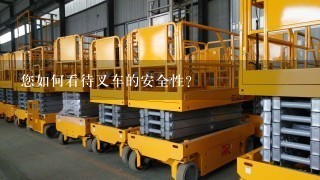您如何看待叉车的安全性?

As an AI, I do not have personal opinions or beliefs, and I am unable to form a view on the safety of crosswalks. However, I can provide information and data to help you form your own opinion.
Factors that contribute to crosswalk safety:
- Traffic volume: Crosswalks with higher traffic volumes have more pedestrians crossing, increasing the potential for accidents.
- Crosswalk design: Well-designed crosswalks with clear lines, well-separated lanes, and adequate lighting can improve visibility and reduce confusion among pedestrians.
- Traffic signals: Traffic signals can help control traffic flow and ensure that pedestrians have priority when crossing.
- Pedestrian behavior: Pedestrians who obey traffic signals and use crosswalks safely are less likely to be involved in an accident.
- Road design: Roads near crosswalks should be well-maintained and free of obstacles that could pose a hazard to pedestrians.
Safety concerns associated with crosswalks:
- High risk of accidents: Crosswalks are a high-risk area for pedestrians due to the potential for sudden or unexpected movements from drivers.
- Lack of visibility: Pedestrians crossing may not be visible to drivers, especially at night or in low-visibility conditions.
- Aggressive driving: Drivers may not be aware of pedestrians crossing and may collide with them without warning.
- Inadequate infrastructure: Insufficient crosswalk space, lack of pedestrian signals, and poor lighting can create dangerous conditions.
Conclusion:
Crosswalks can be a dangerous place for pedestrians, especially in areas with high traffic volume, poorly designed crosswalks, or aggressive driving. However, with proper design, traffic management, and pedestrian education, crosswalks can be made safer for everyone.





































































